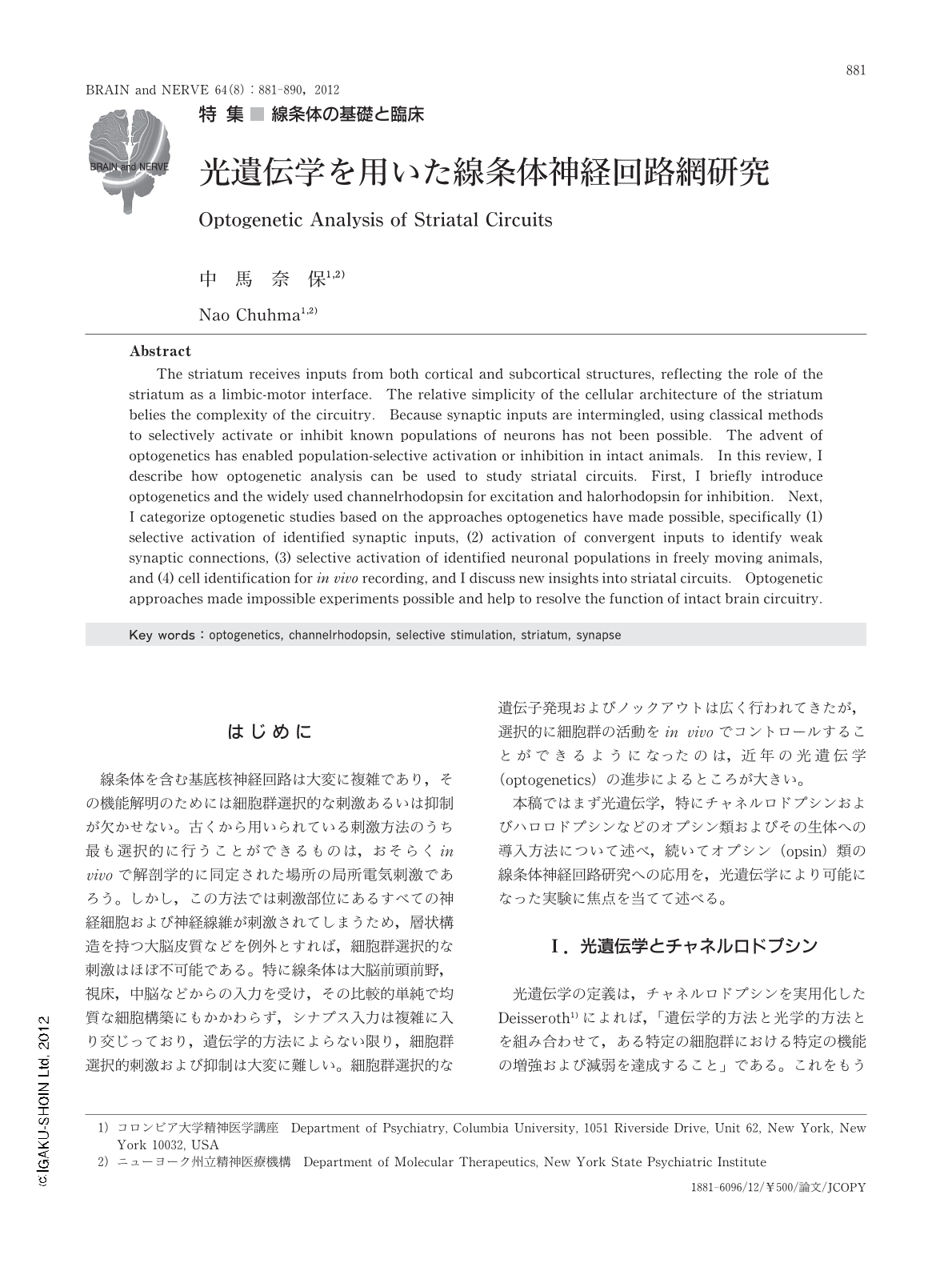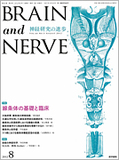Japanese
English
- 有料閲覧
- Abstract 文献概要
- 1ページ目 Look Inside
- 参考文献 Reference
はじめに
線条体を含む基底核神経回路は大変に複雑であり,その機能解明のためには細胞群選択的な刺激あるいは抑制が欠かせない。古くから用いられている刺激方法のうち最も選択的に行うことができるものは,おそらくin vivoで解剖学的に同定された場所の局所電気刺激であろう。しかし,この方法では刺激部位にあるすべての神経細胞および神経線維が刺激されてしまうため,層状構造を持つ大脳皮質などを例外とすれば,細胞群選択的な刺激はほぼ不可能である。特に線条体は大脳前頭前野,視床,中脳などからの入力を受け,その比較的単純で均質な細胞構築にもかかわらず,シナプス入力は複雑に入り交じっており,遺伝学的方法によらない限り,細胞群選択的刺激および抑制は大変に難しい。細胞群選択的な遺伝子発現およびノックアウトは広く行われてきたが,選択的に細胞群の活動をin vivoでコントロールすることができるようになったのは,近年の光遺伝学(optogenetics)の進歩によるところが大きい。
本稿ではまず光遺伝学,特にチャネルロドプシンおよびハロロドプシンなどのオプシン類およびその生体への導入方法について述べ,続いてオプシン(opsin)類の線条体神経回路研究への応用を,光遺伝学により可能になった実験に焦点を当てて述べる。
Abstract
The striatum receives inputs from both cortical and subcortical structures, reflecting the role of the striatum as a limbic-motor interface. The relative simplicity of the cellular architecture of the striatum belies the complexity of the circuitry. Because synaptic inputs are intermingled, using classical methods to selectively activate or inhibit known populations of neurons has not been possible. The advent of optogenetics has enabled population-selective activation or inhibition in intact animals. In this review, I describe how optogenetic analysis can be used to study striatal circuits. First, I briefly introduce optogenetics and the widely used channelrhodopsin for excitation and halorhodopsin for inhibition. Next, I categorize optogenetic studies based on the approaches optogenetics have made possible, specifically (1) selective activation of identified synaptic inputs, (2) activation of convergent inputs to identify weak synaptic connections, (3) selective activation of identified neuronal populations in freely moving animals, and (4) cell identification for in vivo recording, and I discuss new insights into striatal circuits. Optogenetic approaches made impossible experiments possible and help to resolve the function of intact brain circuitry.

Copyright © 2012, Igaku-Shoin Ltd. All rights reserved.


